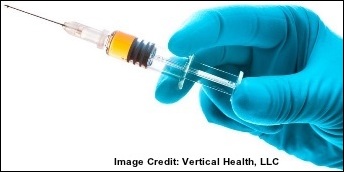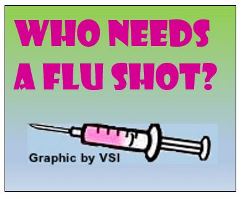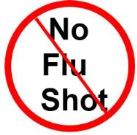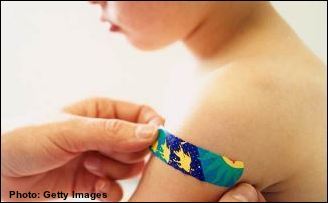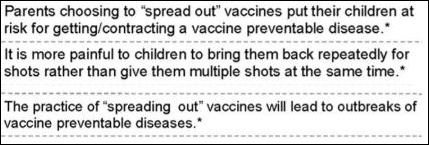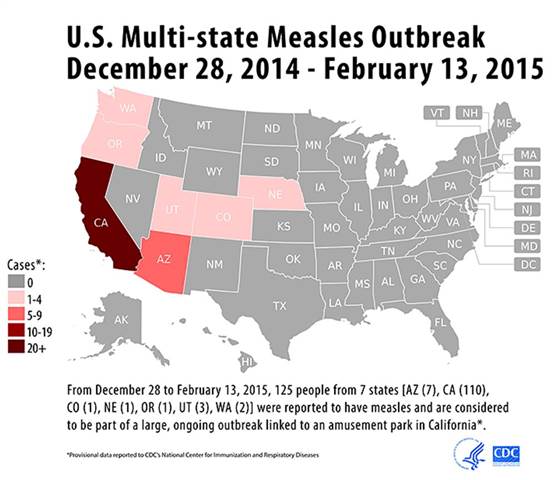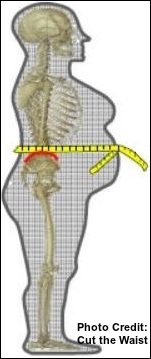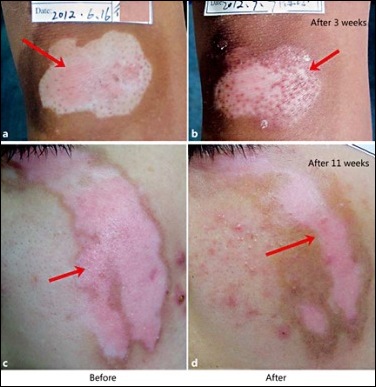| Click Here to View VSI Newsletter in Browser |
 |
||||||||||||||||||||||||||
This Newsletter Has Been Generously Sponsored By:
|
||||||||||||||||||||||||||
|
The Future of Vitiligo is Indeed Very Bright! So often we hear from members who complain that it seems nothing is being done for vitiligo: there are no new treatments, too little research, and still no cure. While it may be true that there still is not a cure, the interest, time, and investment in vitiligo from the worldwide research community has never been stronger. Thanks to the thousands of VSI members who participated in genetic studies, the majority of the genes involved with vitiligo have now been identified. These discoveries have identified many of the critical pathways causing the impairment of melanocyte function and regulation, resulting in pigment loss. We have learned a great deal more about the role of oxidative stress in this destructive process, and why the cells of those with vitiligo have a diminished capability of producing the much-needed anti-oxidant enzymes that protect against this destruction. Now that we know more about why, recent research studies are now focusing on the pathways that protect cells from this oxidative stress and decrease inflammation. According to Dr. Pearl Grimes, MD, “This information is driving the development of new treatment strategies to reverse vitiligo and restore pigmentation to the skin. These involve existing drugs that are now being studied in clinical trials.” As we look forward to 2018, VSI continues its commitment to providing compassionate patient support, and a steadfast agenda to eliminate barriers to research, education, and access to care, for all.
Sincerely,
Each year as the flu season appears on the horizon, VSI experiences an uptick in requests for information on the potential for flu vaccinations to cause problems for vitiligo. Spring and Fall raise similar concerns from those suffering from allergies, and childhood vaccinations are an ongoing concern for many parents. Each of these types of immune therapy plays a very important role in overall health and wellbeing. However, as with any type of medical therapy, each brings the potential for a range of side-effects that is a source of great concern for many.Vitiligo, Autoimmune Disease, and Vaccinations Rather than just addressing the general safety profiles of the various therapies, the objective of this article is to delve into the more specific concerns for those affected by vitiligo.
Because vitiligo is an autoimmune disease, many of the questions we receive relate to autoimmunity, which can also be complicated and confusing. So, before we get into the specific types of vaccines, we’re going to begin with a bit of background information to provide a foundation of understanding for the more specific therapies. Autoimmune vs. Immune Deficient
One common area of misconception is the difference between an autoimmune disease and immune deficiency. Immune deficiency (or immunodeficiency disorders) reduces the ability of your body’s immune system to defend itself from foreign cells such as bacteria, viruses, parasites, or disease, such as cancer. An example of an immunodeficiency disorder would be HIV (human immunodeficiency virus), which can lead to the disease AIDS (acquired immunodeficiency syndrome).
Autoimmune diseases are the result of the other side of immune dysfunction, whereby the immune system becomes overactive, or hyper-responsive, and begins mistakenly attacking cells within its own body. In the case of vitiligo, your body’s immune system is attacking your melanocytes, which are your pigment-making cells. Treatment for autoimmune diseases generally focuses on reducing or suppressing this overactive immune response. Some autoimmune diseases affect multiple body systems, causing debilitating side effects and requiring long-term, systemic, immune-suppressing medications. These types of drugs are typically administered as tablets, capsules, liquids, or injections, and can weaken the immune system, causing secondary immunosuppression.
Autoimmune Disease and Vaccines Autoimmune diseases occur only in those genetically predisposed; however, they require an environmental trigger. In the case of vitiligo, this is why with identical twins, both twins develop vitiligo only 23% of the time. Infections and viruses have been established as leading environmental triggers of autoimmune disease. It is a rare exception for a non-immunocompromised person with an autoimmune disease to experience the onset or worsening of disease after a vaccination. However, many vaccine-preventable infections are known to negatively affect the course of autoimmune diseases. Vaccine-related autoimmunity, though quite rare, does occur in what would seem to be a susceptible subpopulation. One such documentable event occurred in 1976, when the Guillain-Barré syndrome (GBS) was higher than normal in those who received the swine flu vaccine. Research indicates that those vaccine recipients had a higher risk (about 1 additional case per 100,000 vaccinated) of developing GBS than those who were not vaccinated. Many studies have been done since that time to determine if other flu vaccines were associated with an increased risk of GBS. Almost all of the studies found no association; however, two suggested that approximately 1 in 1 million vaccinated people may be at risk of developing GBS. For those who have reason to believe they might be a part of this subpopulation, it would be wise to discuss the risk vs. benefit of vaccines with their doctor. Live Vaccines According to vaccines.gov: “Live vaccines use a weakened (or attenuated) form of the germ that causes a disease. Because these vaccines are so similar to the natural infection that they help prevent, they create a strong and long-lasting immune response. Just 1 or 2 doses of most live vaccines can give you a lifetime of protection against a germ and the disease it causes.” Several types of live-attenuated viral vaccines (LAV), such as live-attenuated influenza, measles, mumps and rubella, oral polio, and rotavirus, have been used safely by healthy individuals for decades. However, their use isnot recommended for those considered immunocompromised, or with weakened immune systems. Flu Shots Who Should Get a Flu Shot? According to the Centers for Disease Control (CDC), all age groups are susceptible to influenza and “everyone 6 months and older is recommended for annual flu vaccination with rare exception.” According to Fortune.com, the 2018 flu virus is “already the most widespread outbreak since public health authorities began keeping track more than a dozen years ago.” “One thing that’s sure to rise is the number of Americans who have died from influenza or related pneumonia, especially among the very young and old. With an additional seven children dying from flu-related disease over the Jan. 6 weekend, the total number of child fatalities attributable to the flu this season has reached 20.” Flu Vaccinations Are Particularly Important for Those at High Risk of Children younger than 5, but especially children younger than 2 years old Adults 65 years of age and older Pregnant women (and women up to two weeks postpartum) Those with medical conditions such as: Asthma Weakened immune system due to disease or medication (such as people with HIV or AIDS, or cancer, or those on chronic steroids or chemotherapy Endocrine disorders including the following associated with vitiligo: Hypo- and Hyper- Thyroid Disease, Hashimoto’s Thyroiditis, Graves’ Disease, Type 1 Diabetes, Addison’s Disease, Adrenal Disorders, and Metabolic Syndrome
Who Cannot Get a Flu Shot?
Because vaccines are developed by being injected into chicken eggs to incubate, if you have an allergy to eggs, you should discuss the options with your physician. There is an alternative formula called Flublok that does not use the influenza virus or chicken eggs in its manufacturing process. Live Flu Vaccine Not Recommended
Click here for CDC 2017-2018 Flu Vaccine Updates Childhood Vaccines:
Another area of concern for many parents is the potential of a severe reaction or side effect as a result of immunizations, the rising number of recommended vaccines, and especially the number they receive at one time. According to 2016 research, the risk of serious side effects from childhood vaccines is statistically considered as rare.
Regarding the overall increase in the number of childhood vaccines, and the number given in a single office visit, there are actually two separate issues to address.
Twenty years ago, children received about 5 shots that included a total of 7 vaccines. Today, the recommended childhood vaccine schedule includes over 20 shots that include about 11 vaccines by age 2. It’s important to understand that the immunological response is caused by the exposure to the antigens, (the proteins in the vaccines that stimulate the immune response) not the number of needle sticks. While it is true that the number of recommended childhood vaccines has increased substantially over the years, the vaccines used today are actually easier on the immune system than those of the past because they contain a greatly reduced number of antigens. For example, in the 1990s, the DTP (diphtheria, tetanus, and pertussis) vaccine exposed the body to more than 3,000 antigens, with the total number of antigens from childhood vaccinations reaching up to 15,250 by age two. Spreading Out Vaccines A 2012 survey reported that nearly all pediatricians had been asked by parents if they would “space-out” their children’s vaccines. In spite of the fact that to do so would go against expert advice as well as their own judgement and training, 74% agreed. The main reason given for agreeing to this practice was their concern for losing the patient’s business. The Physicians Also Cited the Following Concerns: The 2015 measles outbreak began when 40 people were exposed while visiting Disneyland theme parks in Southern California. According to the CDC, this outbreak was the direct result of families who deliberately delayed or refused to vaccinate their children. In 6 weeks’ time, their decision resulted in infecting 125 people from 7 states.
A new survey taken after the Disneyland outbreak revealed that pediatricians across America are under pressure to refuse to accept unvaccinated children. Parents do not want to take their child to a clinic where they risk exposure to unvaccinated individuals. Allergy Shots and Autoimmune Disease
Allergy symptoms can not only make a person feel miserable, but if left uncontrolled can lead to other problems such as migraines, sinus infections, eczema, ear infections, and asthma. Over time, they can wear down or compromise the immune system, leaving it vulnerable to other underlying conditions, such as autoimmune disease. However, many people are concerned about the possibility of allergy immunotherapy triggering or worsening an autoimmune disease. Subcutaneous allergen-specific immunotherapy (SCIT), commonly known as allergy shots, has long been considered a safe and effective allergen immunotherapy used to desensitize the immune response. Side effects are typically local (at the site of injection) and mild, and are primarily dependent on the appropriate dosage, rather than the specific allergen. In most instances, if a side effect is observed, lowering the dosage corrects the problem. Because of the risk, albeit quite rare, of a serious allergic reaction such as anaphylaxis, this type of treatment should only be administered in a medical environment. Several long-term observational studies have investigated the potential of allergy shots (SCIT) as a trigger of autoimmune disease. A Danish study compared 18,841 people who received SCIT with 428, 484 that received conventional allergy therapy (CAT), such as nasal steroids or oral antihistamines, over a period of 10 years, and found that those receiving SCIT were associated with a lower risk of autoimmune disease as well asacute myocardial infarction (heart attacks), ischemic heart disease, and a decreased all-cause mortality (death from any cause). In October 2015, a Polish long-term (20 years) observational study, evaluated the incidence of autoimmune disease and/or the presence of serum autoantibodies, in 1,888 patients who had received specific immunotherapy (SIT) compared to two control groups: a) allergic patients who had never received SIT, and b) people without allergies. The study found no significant difference in autoimmune disease prevalence between the allergic patients with or without SIT. Allergy Shots Are Not Recommended for the Following:
Closing In America, the Centers for Disease Control and Prevention (CDC) continuously monitors the safety of vaccines by working in close partnership with other federal, state and local agencies, as well as private entities. As noted, though the risk of side effects is in most cases considered rare, vaccines, like any medicine, are capable of causing severe side effects or allergic reactions. The information provided in this article is for informational purposes and not intended as medical advice. Each person’s health is unique to their own set of circumstances. All medical decisions should be discussed with your health care provider. Click Here for Additional Information on Vaccine Safety and Monitoring
The American Academy of Dermatology’s (AAD) Camp Discovery program is for children ages 8-16 who have a chronic skin disease. Under the expert care of dermatologists and nurses, Camp Discovery gives campers the opportunity to spend a week with other young people with skin conditions having fun and participating in activities such as swimming, horseback riding, arts and crafts and many more. There is no fee to attend, all costs including transportation, are provided by the AAD through generous donations from its members, outside organizations and individuals.
2018 Camp Discovery Dates and Locations:
For more information about attending or volunteering: Visit www.campdiscovery.org, or
Calling all Medicare Vitiligo Patients!
Part of the problem is that currently there is no accepted standard for coverage of vitiligo treatments. Each company has their own policies and guidelines, many times based on outdated and incorrect information. What most people may not realize is just how much private insurance coverage can be affected by Medicare policies. Over 55 million Americans are now covered by Medicare or Medicare Advantage, making it the nation’s largest health insurance program. Consequently, many, if not most, insurance providers establish their baseline standards and procedures to follow the Medicare model. We have been in touch with Medicare and have been told that if we can provide a Medicare letter of denial for a vitiligo treatment, then they will try to help us set a standard of coverage. If you are reading this newsletter and you, or someone you know, was denied coverage for a vitiligo treatment by Medicare, please contact VSI immediately. You could help make a difference for future insurance coverage for ALL vitiligo patients! Click Here to Contact VSI
What's On Your Mind? Q. I’m depigmented, but began getting brown spots of pigment! I have had vitiligo for over 40 years and have been completely depigmented for many years. This summer, I went to the beach and accidently burned my skin pretty badly. After that, I began seeing new spots of pigment coming back on my arms. I have been really upset because it took me a long time to finally become one color. Am I going to regain all my pigment again? What should I do?
Highlights of recently-published medical Can Vitiligo Affect Your Waistband?
Researchers have long recognized abdominal obesity as a symptom of “metabolic syndrome.” However, it’s only been in in the past 5 or 6 years that this syndrome has become more widely studied as a risk factor for those with vitiligo. A 2012 study noting that this syndrome occurs in other inflammatory skin diseases, including psoriasis, found lower HDL cholesterol, higher LDL cholesterol, increased homocysteine levels, and increased incidence of insulin resistance, diabetes, and high systolic blood pressure, among vitiligo patients. A 2014 study noted similar metabolic abnormalities in children aged 7-14 years with active vitiligo.
But What is the Vitiligo Connection? In years past, vitiligo was thought to affect only the melanocytes (pigment-making cells) of the skin. While loss of pigment from affected skin melanocytes may be the most visible and recognizable sign of disease, we now know that these cells are found throughout the entire body and have systemic involvement far greater than producing pigment. A 2017 study conducted in Ankara, Turkey, looked more closely at the cause and effect of vitiligo and metabolic syndrome. The study authors identified melanocytes in adipose (fatty) tissue, noting that these specific cells have an anti-inflammatory effect that reduces reactive oxygen species (ROS), which is responsible for oxidative stress. The vitiligo patients in the study were found to have reduced levels of melanocytes and melanogenesis (the production of melanin) in the adipose tissue, which could lower the anti-inflammatory production, thereby causing an increased production of the free oxygen radicals in vitiligo, further explaining the very high levels of ROS and oxidative stress found in those with active vitiligo. The authors cite oxidative stress as a major reason for the development of metabolic syndrome (MetS) and vitiligo. Criteria for Study Inclusion:
Outcome: MetS was identified in 24 (38.1%) of those with vitiligo, compared to only 14 (21.4%) of the controls The study identified the following criteria as predictors for which vitiligo patients would be most likely to develop metabolic syndrome:
Not everyone with vitiligo will develop metabolic syndrome. However, because the conditions associated with MetS increase the risk of cardiovascular disease, if you begin to notice any combination of the symptoms such as those listed above, you should discuss the situation with your doctor so that preemptive steps can be taken. Can Varicose Veins Affect Vitiligo Treatment? A recent article in the Journal of the Dermatology Nurses' Association discusses the somewhat unique observations of 2 vitiligo patients being treated 3 times a week with narrowband UVB phototherapy at the Vanderbilt Dermatology Phototherapy Clinic. The authors reported extensive repigmentation over all of the vitiligo areas being treated, except for either a delayed or absent response exclusively over varicose veins. During this same time, one of the patients underwent phlebectomy and sclerotherapy, varicose vein treatment. Within 3 weeks of the vein treatment, very positive repigmentation was observed in the treated area. The authors note that there has been very little medical literature on this topic, and hope that reporting will draw attention to the phenomenon and encourage others to watch for and report similar occurrences. Topical Histamine Stimulates Because recent studies have suggested that histamine stimulates melanogenesis (the process by which melanocytes produce pigment) in vitro, a group of Chinese researchers conducted a study to see if a topical histamine would stimulate repigmentation in patients with stable, nonsegmental vitiligo. The study included 23 vitiligo patients: 4 males and 9 females, aged 6-59 years. The participants were divided into two groups. One group applied a solution of 1% histamine mixed with distilled water to an area of vitiligo, twice daily. The other group was treated with distilled water alone. The melanin index (amount of pigment/color) was measured on the uninvolved and depigmented skin sites before the study began, and again after 5 weeks of treatment. Results: The melanin index of those treated with the topical histamine showed an increase of 38%, as well as greater than 60% reduction in depigmentation. Conclusion:
Online Vitiligo "Selfie" Study!
Vitiligo Research Study in New York City.
Earn Funding for VSI with Amazon and eBay Online Shopping Can Benefit VSI!
Support VSI Through Ebay
|
|||||||||||||||||||||||||
| Copyright © 2018 Vitiligo Support International Inc. All rights reserved. Reproduction or republication strictly prohibited without prior written permission A Vitiligo Support International, Inc. financial statement is available upon written request from the Virginia Office of Consumer Affairs. Mail requests to: Virginia Department of Agriculture and Consumer Services, Office of Consumer Affairs, P.O. Box 1163, Richmond, Virginia 23218. Unsubscribe from the original email |
||||||||||||||||||||||||||




